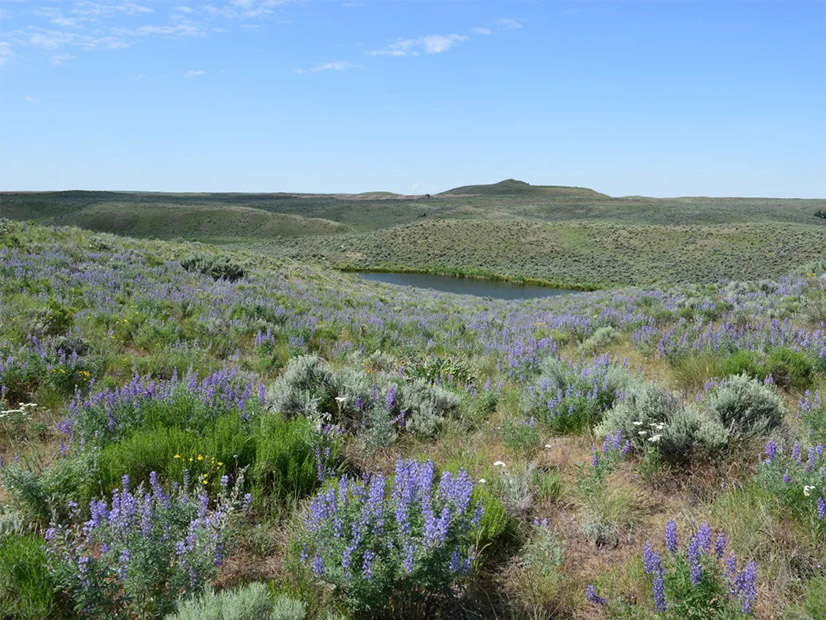
A horde of solar developers want to set up projects in Eastern Washington, but the majority don’t appear to be doing their research early enough on the sensitive shrub steppe habitat that is prime turf for solar farms.
That is what the Habitat Committee of the state’s Fish and Wildlife Commission learned Tuesday.
The lack of attention is important because most of the proposed solar farms in Washington have targeted shrub steppe land east of the Cascade Mountains. Shrub steppe is a mostly treeless semi-desert filled with sagebrush that is home to several species of birds and mammals that are watching their habitats shrink. These include sage grouse, sharp-tailed grouse and pygmy rabbits.
Wildfires, agricultural fields and expanding cities and towns have chewed into the state’s original 10.4 million acres of shrub steppe, trimming it to 40% of its original size. Solar farms will further encroach on the remaining shrub steppe, Michael Ritter, a Washington Department of Fish and Wildlife (WDFW) habitat biologist told the committee.
Washington has 37 solar farms in operation, being built or on the drawing board, Ritter said. Thirty-five are east of the Cascades in or next to shrub-steppe lands; only two are west of the mountain range.
So far, only one of the eastern solar farms is operational, while two are being constructed and four are going through state permitting processes. Another 28 are on the drawing board, taking care of the homework needed before tackling the permitting processes, Ritter said. It usually takes one to two years of preliminary work before a solar project is ready to be unveiled, he added.
“These projects are already doing a lot of work in the background,” he said.
WDFW staff and Habitat Committee members voiced concern about solar developers neglecting to investigate sensitive species and habitat issues prior to locking themselves in to specific sites.
“There is a big public sense that these companies … will get a bit of a free pass [in getting their projects approved],” said committee member Molly Linville, a rancher and farmer in central Washington’s Douglas County.
Ritter said, “They ask me how to mitigate for the sage grouse. There is no mitigation. You don’t build there. … It’s like they think when they get into the permitting process, it’s going to happen. We may tweak it a little bit, but it’s going to get in. That’s too late. I wish the companies would reach out to us first.”
Linville noted that plans for three solar projects have recently appeared in Douglas County. None are far enough along to apply for permits, and none have researched habitat issues. She found out about them through news reports and the local grapevines.
Committee members said something must be done to get developers to inquire about sensitive habitat issues early in their brainstorming.
“We shouldn’t be put in the position of having to defend against green energy with our conservation needs. …. It’s a no-win situation,” said committee member Barbara Baker, an Olympia attorney.
The full commission is scheduled to discuss the matter on Sept 17.


